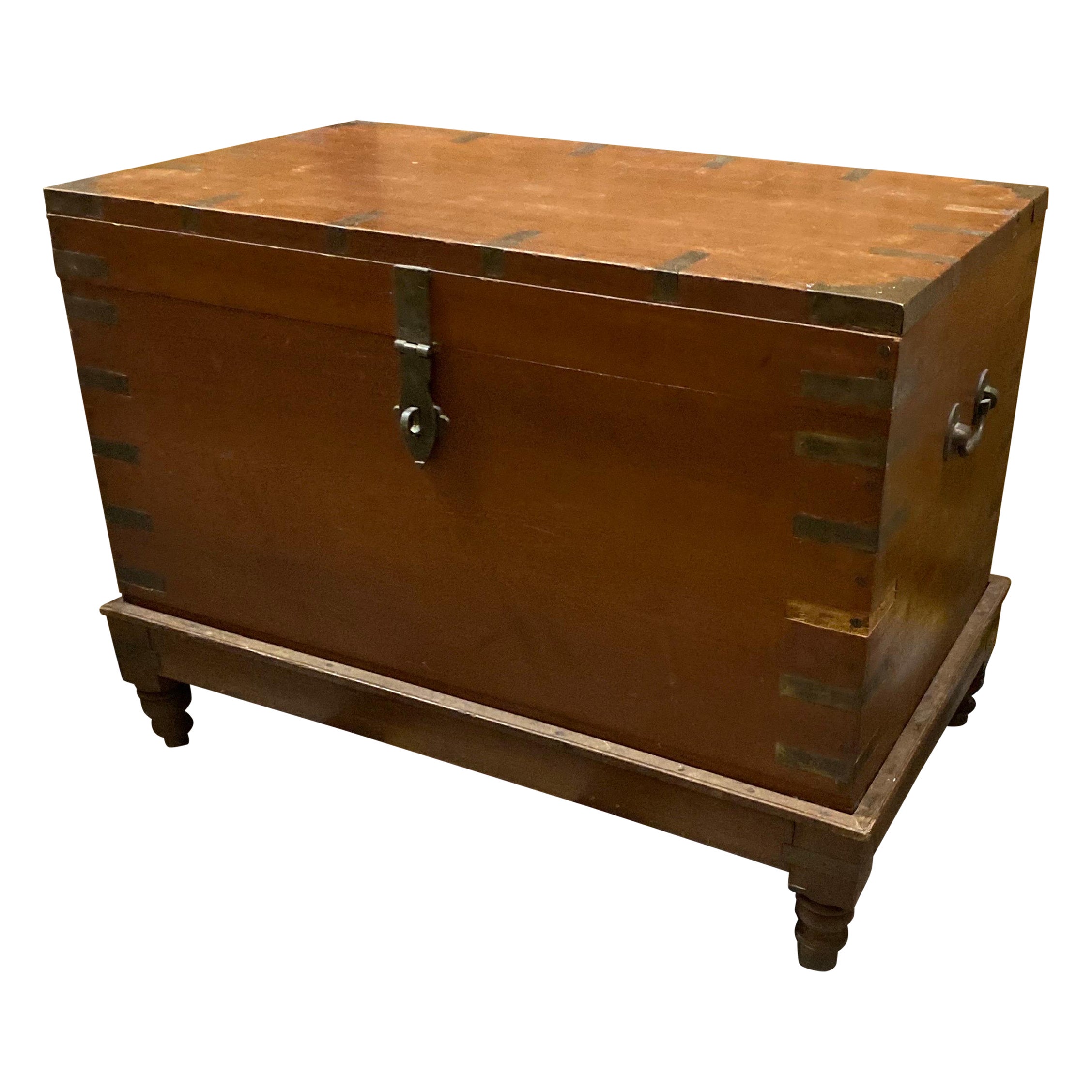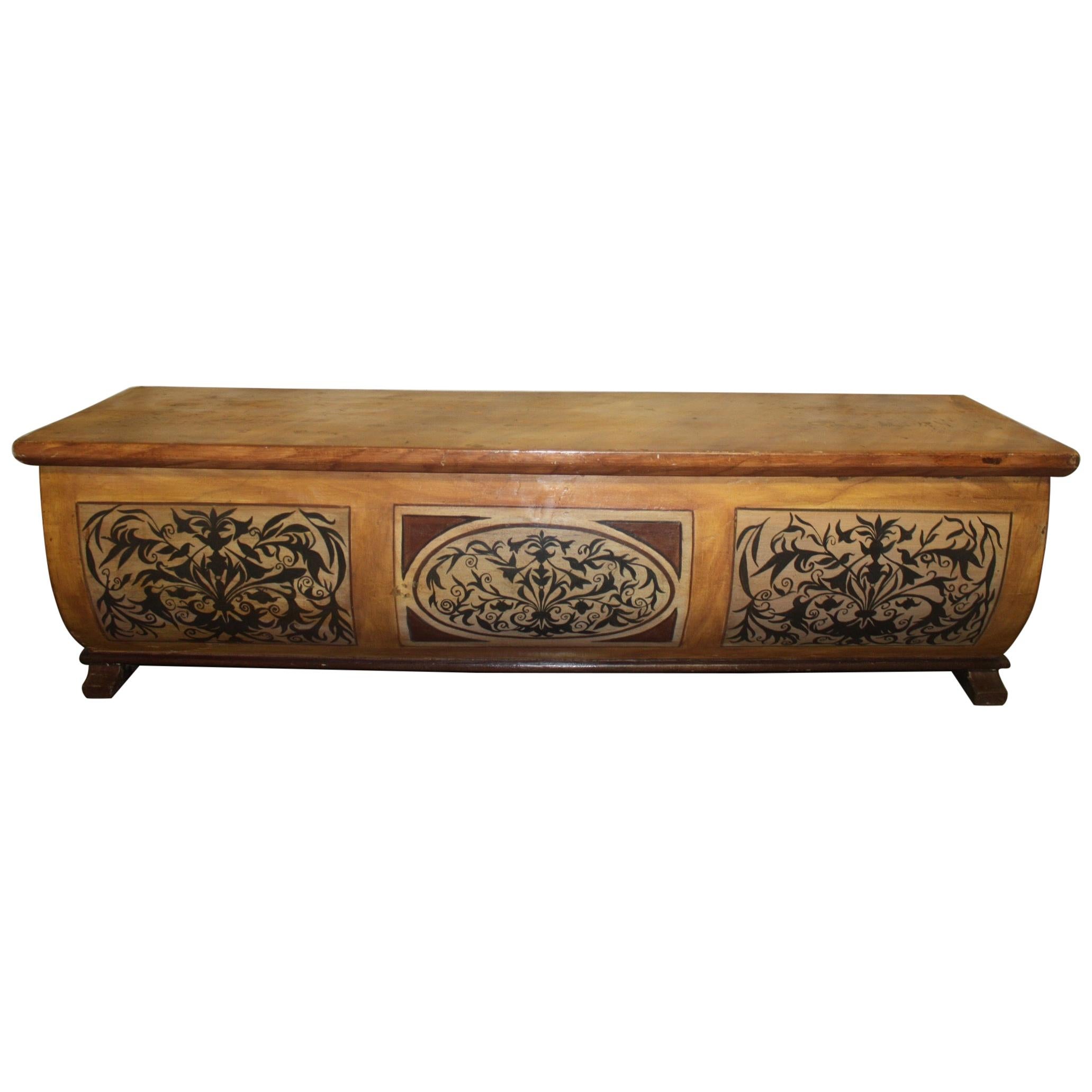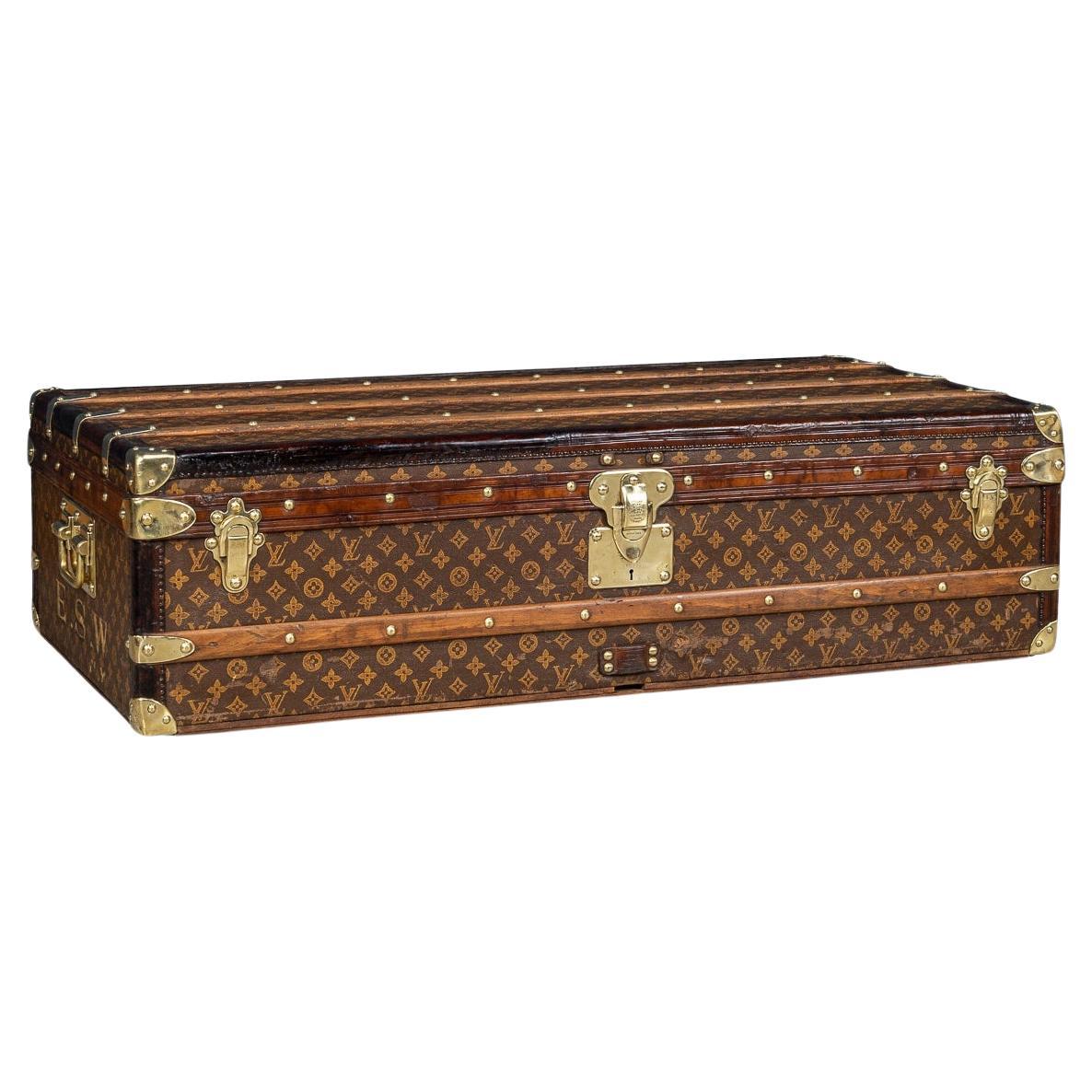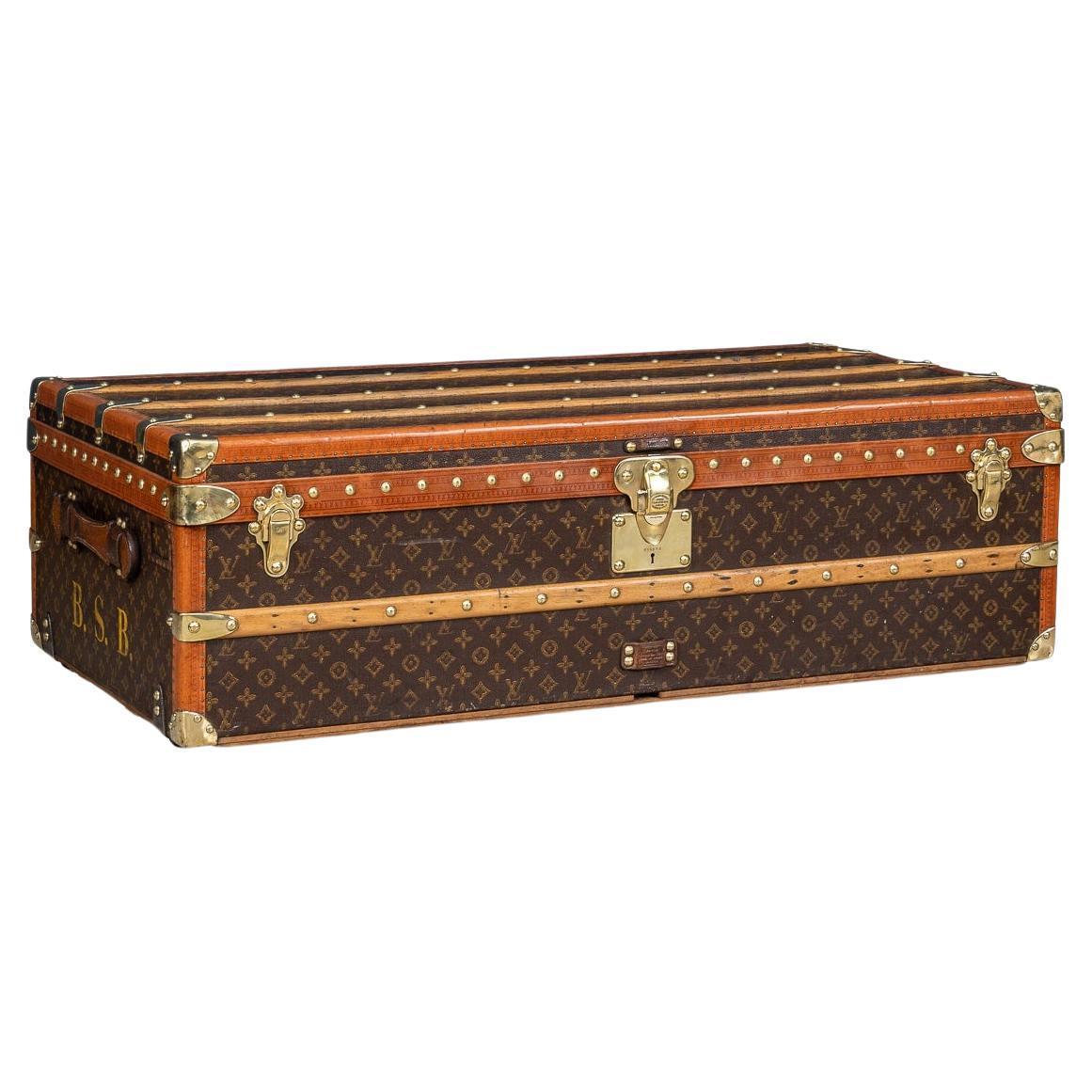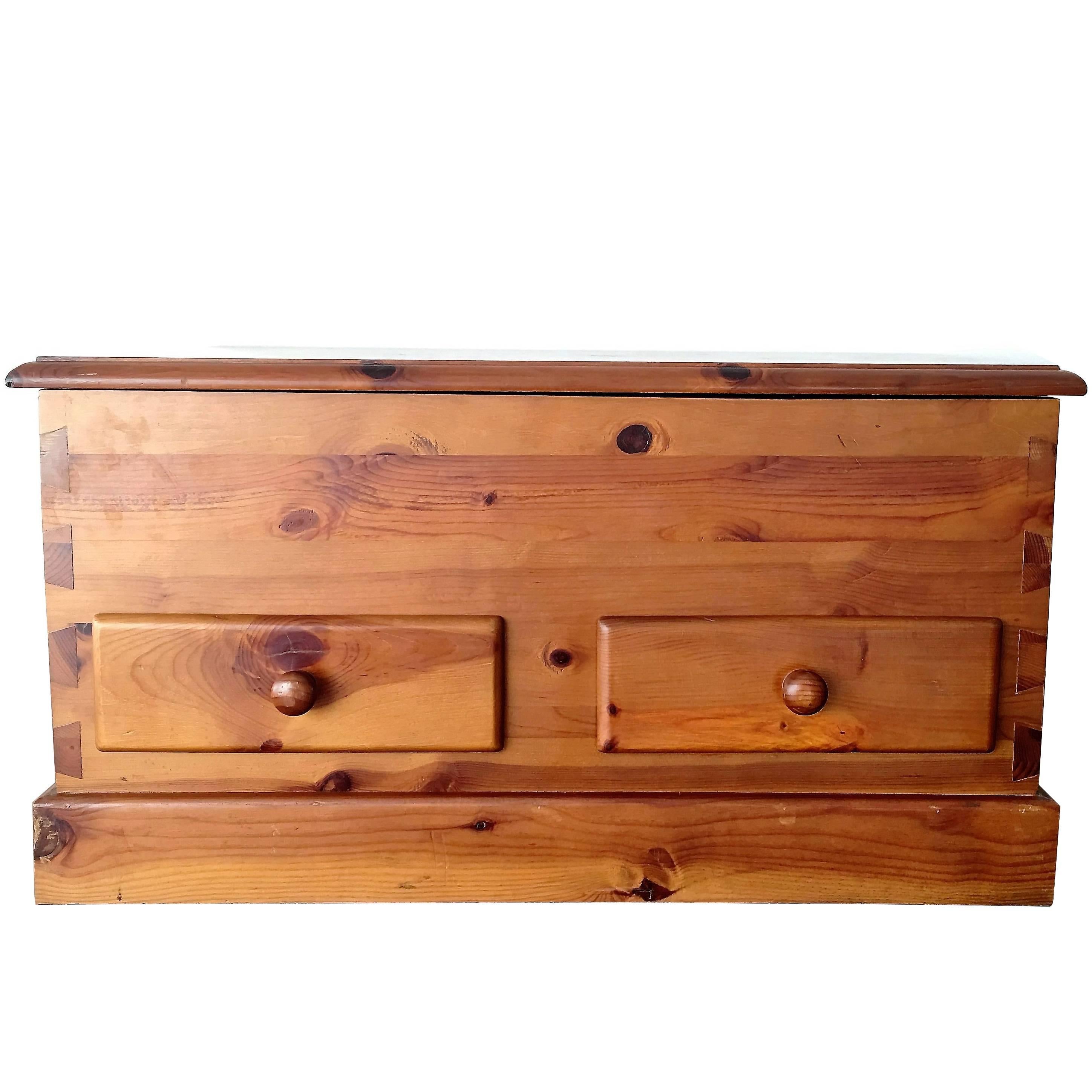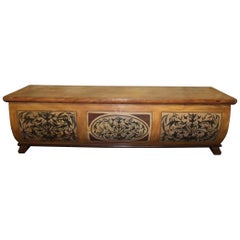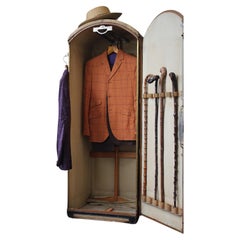
20th Century French Traveling Trunk
View Similar Items
Want more images or videos?
Request additional images or videos from the seller
1 of 7
20th Century French Traveling Trunk
About the Item
About the Seller
5.0
Vetted Seller
These experienced sellers undergo a comprehensive evaluation by our team of in-house experts.
Established in 1976
1stDibs seller since 2018
119 sales on 1stDibs
Typical response time: 6 hours
More From This SellerView All
- 20th century French Painted Metal and Wood Bird Cage, 1920sLocated in LEGNY, FRBeautiful bird cage dating from the 1920s in metal and wood painted white. Pivot door. Feeder and perch.Category
Vintage 1920s French Bird Cages
MaterialsMetal
- 20th century Regule and Marble Adam Feron Bookend, 1930sLocated in LEGNY, FRPair of painted spelter bookends on a marble base dating from the 1930s representing a monk and a geisha. Adam Feron signature on each character. Paint faded in some places but overa...Category
Vintage 1930s French Bookends
MaterialsMarble
- 20th Century French Bronze CatLocated in LEGNY, FRVery nice 20th century French sheet metal cat in boots with a basket. Good quality and condition.Category
20th Century French Animal Sculptures
MaterialsSheet Metal
- 20th Century French Ceramic Ashtray, 1950sLocated in LEGNY, FRVery nice 20th century French ceramic ashtray from the 1950s. Green and gold color. A lion is designed in the center of the ashtray because it...Category
Vintage 1950s French Ashtrays
MaterialsCeramic
- 20th Century French Metal Heron, 1930sLocated in LEGNY, FRVery nice 20th century French metal bird from the 1930s. Made in two parts that has been reunited thanks to bolts. Nice natural patina made over the years. Could be outdoor. Be...Category
Vintage 1930s French Statues
MaterialsMetal
- 20th Century French Ceramic Tulipiere VaseLocated in LEGNY, FRVery nice and rare black ceramic pyramid Tulipiere from the 1980s. Used to put flowers. Each compartments are removable from the pyramid. The bas...Category
20th Century French Planters, Cachepots and Jardinières
MaterialsCeramic
You May Also Like
- Early 20th Century French Bench TrunkLocated in Stockbridge, GAEarly 20th century French bench trunk.Category
Early 20th Century French Renaissance Benches
MaterialsWood
- Early 20th Century Gentleman's Travelling Streamer Trunk Wardrobe LuggageLocated in Lowestoft, GBA rather good quailty "gentleman's" travelling wardrobe, constructed from hardwood with leather and a canvas covering. A simple painted lineal design, with heavy gauge brass latches ...Category
Early 20th Century English Trunks and Luggage
MaterialsLeather, Canvas, Wood
- 20th Century Louis Vuitton Trunk, France c.1930By Louis VuittonLocated in Royal Tunbridge Wells, KentAn exquisite and complete Louis Vuitton trunk from the early part of the 20th century. An absolutely essential item for elite travellers of its time the trunk is adorned in the iconic LV monogrammed canvas, accented by lozine trim and brass fittings. This trunk stood as the epitome of luxury over 100 years ago, boasting an unparalleled level of sophistication and elegance, it remains a timeless masterpiece that transcends eras. The captivating allure of the Louis Vuitton trunk transforms it into more than a mere luggage accessory; it becomes a focal point for any room. With its impressive dimensions, it is perfectly suited as a striking coffee table, side table, or even as a standalone centrepiece, seamlessly integrating into any interior, whether modern or traditional. An extraordinary piece that not only pays homage to the past but also serves as a statement of unparalleled luxury in the present. A brief history about Louis Vuitton trunks: Louis Vuitton was born in 1821 to a farmer and milliner and came from a long-established working-class family in eastern France. Vuitton grew up understanding the effects of perseverance and a strong work ethic from watching his family. At the age of 16, he made the decision to walk 292 miles from his hometown to Paris to try and make a new life for himself. When he arrived the city was in the midst of industrialization with current modes of transportation evolving quickly allowing for longer journeys. With this came the need for sturdy travel pieces. Vuitton was taken as an apprentice for a successful box maker and packer named Monsieur Marechal. He learned to craft durable containers and how to pack them properly – a well-respected profession at the time.In 1854, years after he had mastered his craft and became well respected for it, Vuitton ventured out on his own to open a shop on Rue Neuve des Capucines. It was here that he began to establish himself as a luggage maker. Then, in 1858, Vuitton designed the first Louis Vuitton steamer trunk. At the time trunks had rounded tops to allow for water to run off but this did not allow for convenient stowage. Vuitton introduced a flat, yet waterproof, trunk that was easily stackable. The first of his trunks were outfitted with a grey canvas referred to as Trianon – it wouldn’t be until several decades later that the signature monogram would be introduced. With a burgeoning business, Vuitton moved his family and workplace to Asniere, where he employed twenty workers to craft his trunks. By 1900 he would have 100 employees, and in 1914 the company would more than double in size. After years of success, Vuitton began to experiment with the design of his luggage by introducing a new striped canvas pattern (1876) and later the still well-known Damier print (1888). The hand-painted patterns were developed to prevent counterfeits. Even in the late 1800s, Louis Vuitton was enough of a status symbol to warrant counterfeiting. In 1886, his son George invented and patented an ingenious locking system that made it impossible to pick the lock of their trunks. This lock is still used today. 1892 would prove to be a time of mourning for the family as Louis Vuitton passed...Category
20th Century French Other Trunks and Luggage
MaterialsBrass
- 20th Century Louis Vuitton Trunk, France c.1910By Louis VuittonLocated in Royal Tunbridge Wells, KentAn exquisite and complete Louis Vuitton trunk from the early part of the 20th century. An absolutely essential item for elite travellers of its time the trunk is adorned in the iconic LV monogrammed canvas, accented by lozine trim and brass fittings. This trunk stood as the epitome of luxury over 100 years ago, boasting an unparalleled level of sophistication and elegance, it remains a timeless masterpiece that transcends eras. The captivating allure of the Louis Vuitton trunk transforms it into more than a mere luggage accessory; it becomes a focal point for any room. With its impressive dimensions, it is perfectly suited as a striking coffee table, side table, or even as a standalone centrepiece, seamlessly integrating into any interior, whether modern or traditional. An extraordinary piece that not only pays homage to the past but also serves as a statement of unparalleled luxury in the present. A brief history about Louis Vuitton trunks: Louis Vuitton was born in 1821 to a farmer and milliner and came from a long-established working-class family in eastern France. Vuitton grew up understanding the effects of perseverance and a strong work ethic from watching his family. At the age of 16, he made the decision to walk 292 miles from his hometown to Paris to try and make a new life for himself. When he arrived the city was in the midst of industrialization with current modes of transportation evolving quickly allowing for longer journeys. With this came the need for sturdy travel pieces. Vuitton was taken as an apprentice for a successful box maker and packer named Monsieur Marechal. He learned to craft durable containers and how to pack them properly – a well-respected profession at the time.In 1854, years after he had mastered his craft and became well respected for it, Vuitton ventured out on his own to open a shop on Rue Neuve des Capucines. It was here that he began to establish himself as a luggage maker. Then, in 1858, Vuitton designed the first Louis Vuitton steamer trunk. At the time trunks had rounded tops to allow for water to run off but this did not allow for convenient stowage. Vuitton introduced a flat, yet waterproof, trunk that was easily stackable. The first of his trunks were outfitted with a grey canvas referred to as Trianon – it wouldn’t be until several decades later that the signature monogram would be introduced. With a burgeoning business, Vuitton moved his family and workplace to Asniere, where he employed twenty workers to craft his trunks. By 1900 he would have 100 employees, and in 1914 the company would more than double in size. After years of success, Vuitton began to experiment with the design of his luggage by introducing a new striped canvas pattern (1876) and later the still well-known Damier print (1888). The hand-painted patterns were developed to prevent counterfeits. Even in the late 1800s, Louis Vuitton was enough of a status symbol to warrant counterfeiting. In 1886, his son George invented and patented an ingenious locking system that made it impossible to pick the lock of their trunks. This lock is still used today. 1892 would prove to be a time of mourning for the family as Louis Vuitton passed...Category
20th Century French Other Trunks and Luggage
MaterialsBrass
- 20th Century Louis Vuitton Trunk, France c.1930By Louis VuittonLocated in Royal Tunbridge Wells, KentAn exquisite and complete Louis Vuitton trunk from the early part of the 20th century. An absolutely essential item for elite travellers of its time the trunk is adorned in the iconi...Category
20th Century French Other Trunks and Luggage
MaterialsBrass
- 20th Century Trunk for StorageLocated in Miami, FL20th century chest on bracket feet with a top that opens to reveal storage and drawers below.Category
Vintage 1940s Spanish Modern Wardrobes and Armoires
MaterialsPine
Recently Viewed
View AllMore Ways To Browse
Trunks With Hardware
Vintage Suitcase Suitcase
Vintage Suitcase Suitcases
Steamer Furniture
Leather Wood Trunk
Used Steamer
Vintage Trunk Trunks
Leather Trunk French
Vintage Trunks For
Travel Trunk
Travelling Trunk
Antique Tags
Antique Tag
Vintage Trunks
French Leather Brass Trunk
Antique Large Trunk
Large Antique Trunk
Antique Trunk Large
